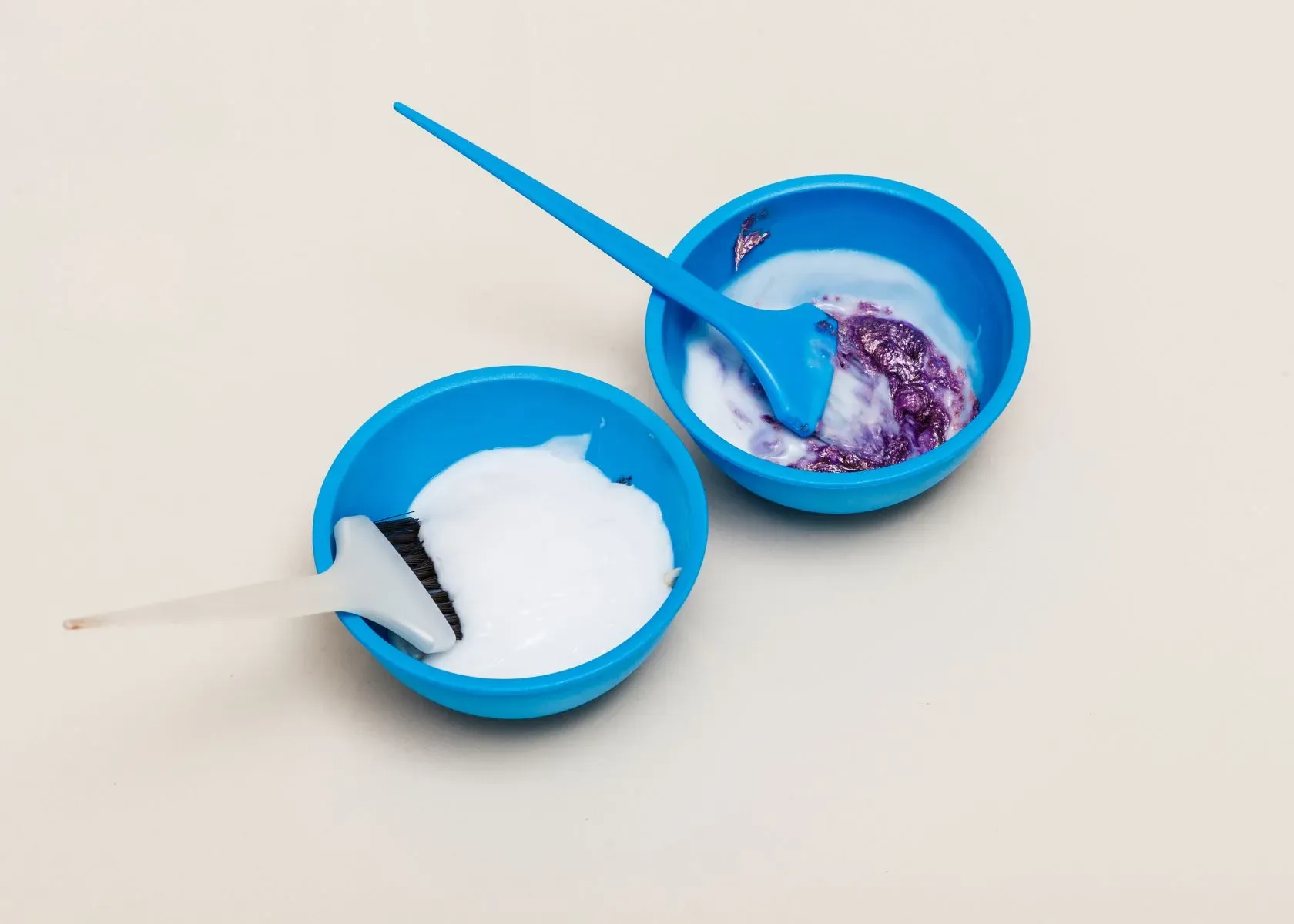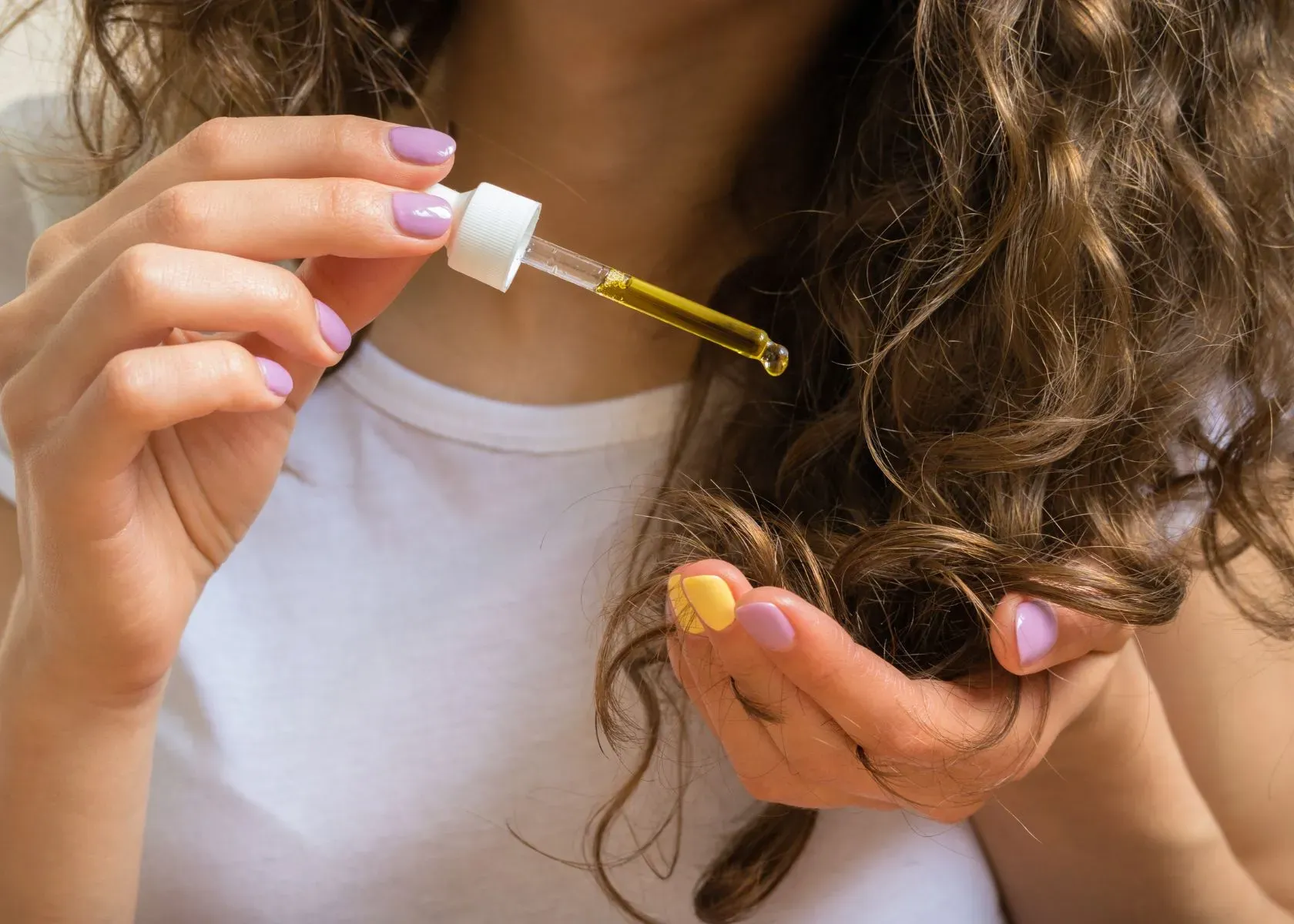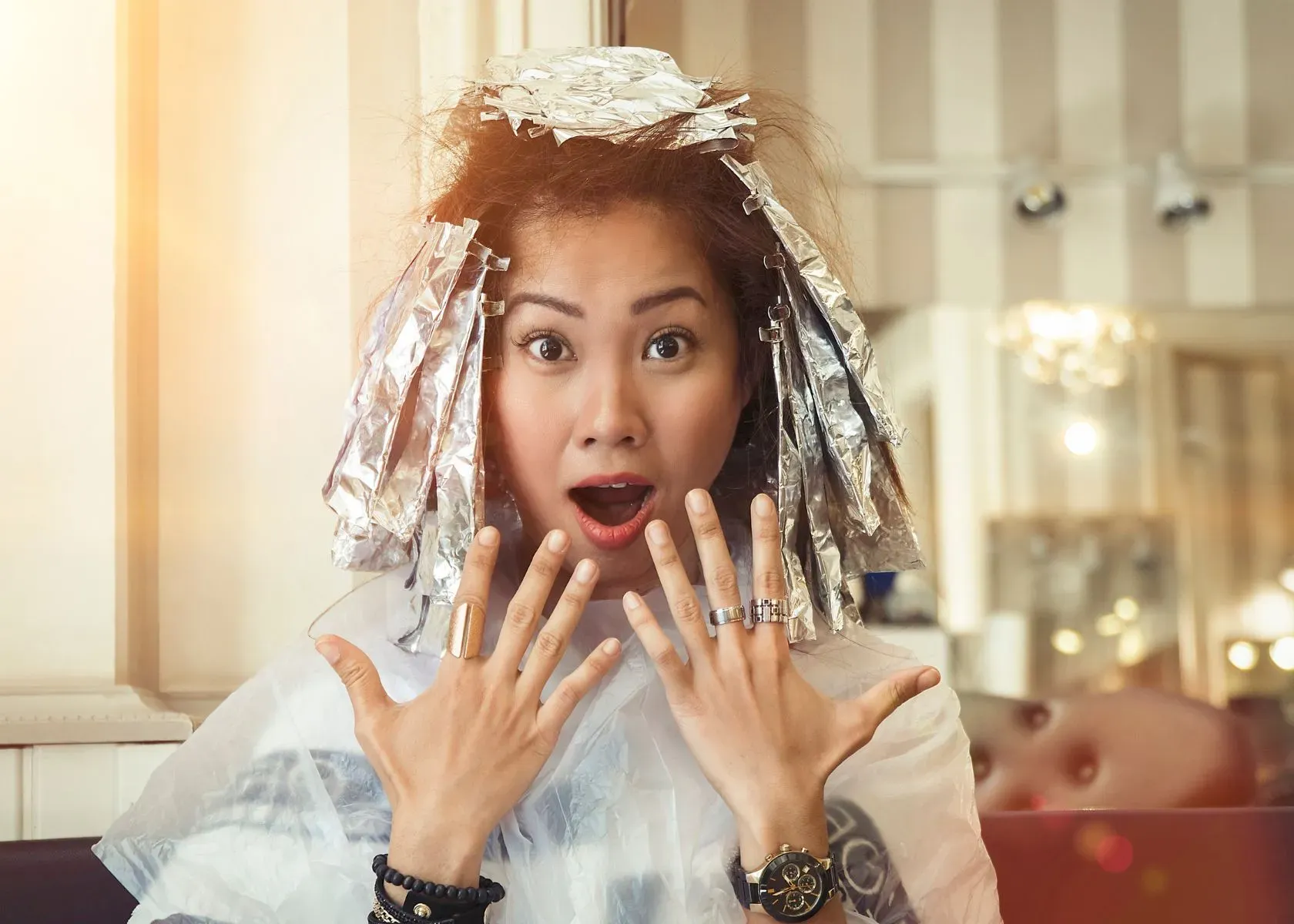Bleaching your hair can give you a whole new look, but it's important to know how often you can do it without causing damage. Think of bleach as a powerful chemical that lightens your natural hair color.
Once you’ve gone lighter, it's all about maintenance—treatments that deeply condition, steering clear of harsh products, and getting regular trims are key steps.
If you bleach too often, though, brace yourself for potential problems like breakage or even scalp burns—it's serious stuff. Nowadays, home kits make bleaching accessible, but remember, only one session per day is safe if keeping healthy hair is your goal.
Take note: gentle products with clear instructions are best when choosing how to bleach at home.
Taking care of our tresses means finding balance—a minimum two-week recovery after each bleach bath will let them rest up nicely until the next round. Explore the secrets to brightening safely and keep those locks looking fabulous.
- Wait at least six weeks between full bleachings to allow hair time to recover and prevent damage.
- Before bleaching again, consider your hair's texture, history of treatments, and how light you want it to become; these factors influence the safe frequency of bleaching.
- Use deep conditioning treatments regularly after bleaching to restore moisture and repair damaged hair.
- Avoid harsh chemicals in your hair care products post-bleach, such as sulfates, which can strip the hair further, leading to dryness and brittleness.
- Keep up with regular trims every 6 - 8 weeks after bleaching your hair to prevent split ends and breakage.
How Often Can You Safely Bleach Your Hair?

The recommended wait time between bleachings is at least 6 weeks to allow your hair to recover from the chemical process. Over-processing and excessive bleaching can lead to severe damage and breakage, so it's important to consider the health of your hair before deciding on how often to bleach.
Recommended Wait Time Between Bleachings (at Least 6 Weeks)
Patience is key after you've bleached your hair. Experts advise waiting a minimum of six weeks before going for another round with the bleach. This span gives your strands some much-needed recovery time, helping to fend off breakage and maintain strength.
Consider this rest period as an investment into the long-term health and vibrancy of your hair.
During these six weeks, focus on nourishment and repair. Use deep conditioning treatments regularly to restore moisture and repair any damage from the previous bleaching session. Avoid harsh chemicals or heat styling tools that can exacerbate weakened hair structures; instead, embrace gentler approaches to give your locks the best chance at full recovery.
Now, let's talk about factors to consider before you decide to re-bleach or touch up those roots, which could potentially alter your wait time between sessions.
Risks of Over-Processing and Damaging Hair
Over-processing and damaging hair can result from bleaching too frequently, leading to weakened and brittle hair. The repeated use of harsh chemicals can strip the hair shaft of its natural moisture, making it dry and prone to breakage.
Additionally, over-processed hair is more susceptible to split ends and frizz, compromising its overall health.
Bleaching roots too often can also cause scalp irritation or potential chemical burns due to prolonged exposure to strong chemicals. Moreover, over-bleaching the hair may lead to a loss of elasticity, making it more likely to snap or break during hairstyling or routine brushing.
It's crucial for individuals considering frequent bleaching sessions to be aware of these risks and take necessary precautions in their hair care routines.
To ensure healthy and vibrant hair despite regular bleaching, understanding how often one should bleach their hair is essential. Let’s explore some important factors that need consideration before opting for a new round of bleaching.
Factors to Consider Before Bleaching Your Hair

Consider your hair texture and thickness, previous hair treatments, and desired lightness level before deciding to bleach your hair. These factors will ultimately determine the frequency and intensity of the bleaching process.
Hair Texture and Thickness
Consider your hair texture and thickness before deciding how often to bleach. Thicker, coarser hair can withstand more frequent bleaching than fine or fragile strands. The density and natural oils in your hair also influence the effects of bleaching.
Moreover, thicker hair may require longer intervals between treatments to maintain its health and prevent damage. Pay attention to how your hair reacts to bleach and adjust the frequency accordingly. To fix unevenly bleached hair, use the hair bleaching agents on a small portion of hair safely.
Understanding your own unique hair qualities is essential for determining the appropriate timeline for bleaching sessions. Fine or thin hair should typically be given longer breaks between treatments, while individuals with thicker locks may have some flexibility in their bleaching schedule.
Previous Hair Treatments
Before bleaching your hair, it is crucial to consider any previous treatments, such as coloring or chemical processing. These factors can affect how your hair responds to bleaching and impact its overall health.
If you've recently colored or chemically treated your hair, it's essential to wait for a sufficient amount of time before considering the next bleach application. This waiting period will allow your hair to recover from the previous treatment and minimize the risk of over-processing.
Understanding how different treatments have affected your hair in the past will help determine the appropriate timing for future bleaching sessions. It also allows you to assess whether additional conditioning or restorative treatments are needed before subjecting your hair to a new round of bleach.
Desired Lightness Level
After considering your hair's texture, thickness, and any previous treatments, you should determine the desired lightness level before bleaching. The extent to which you want to lighten your hair will impact the frequency and intensity of bleach applications.
If you aim for a drastic change in color, more frequent or potent bleaching may be necessary. However, if you seek subtle highlights or a slight shift in tone, less aggressive bleaching can achieve the desired results while minimizing potential damage.
Understanding your preferred lightness level is crucial as it directly influences how often you may need to bleach your hair. Whether aiming for a dramatic transformation or a minor adjustment, being clear about the degree of lightness can guide your approach to safe and effective hair bleaching without compromising its health.
How To Care For Your Hair After Bleaching?

After bleaching your hair, it's important to regularly condition it and avoid harsh hair products to keep your hair healthy. Regular trims will also help maintain the integrity of your hair.
Deep Conditioning Treatments
Deep conditioning treatments are essential after bleaching or hair dye to restore moisture and strength to the hair. They help repair damage caused by the bleaching process, leaving the hair feeling soft and revitalized.
Regular deep conditioning, at least once a week, can also help maintain the health of bleached hair and prevent dryness and breakage.
To ensure effective deep conditioning, look for products with nourishing ingredients such as argan oil, shea butter, or keratin. These will help replenish lost moisture and strengthen the hair from within.
Avoid Harsh Hair Products
After indulging in deep conditioning treatments to restore moisture and strength to your bleached hair, it is crucial to avoid harsh hair products that can further damage your delicate strands.
Opt for sulfate-free shampoos and conditioners, as sulfates can strip away natural oils and moisture from your hair, leaving it dry and brittle. Look for gentle, hydrating purple shampoo for blonde hair color enriched with nourishing ingredients like argan oil, coconut oil, or shea butter to keep your bleached locks healthy.
In addition to sulfate-free products, steer clear of alcohol-based styling products that can dehydrate the hair and lead to breakage. Instead, opt for alcohol-free styling sprays or creams that provide hold without compromising the health of your bleached locks.
Regular Trims
Regular trims are essential for maintaining healthy bleached hair. Trimming every 6-8 weeks can prevent split ends and breakage, keeping your hair in optimal condition. This is especially important after bleaching, as the process can weaken the hair strands.
Consistent trimming also promotes even growth, minimizing the need for excessive root touch-ups between bleachings. By removing damaged ends regularly, you help maintain a balanced look and prevent over-processing your hair.
Remember to communicate with your stylist about your desired length and style to ensure the best results.
Ensuring that your dark hair receives regular trims will contribute significantly to its health and appearance post-bleachings. Proper maintenance will keep it looking vibrant and feeling soft while reducing the risk of further damage due to over-processing or weakening strands.
Maintaining this schedule will help keep your hair healthy between professional touch-ups at the salon.
The Dangers of Bleaching Too Frequently

Bleaching your hair too often can lead to significant damage, including breakage, chemical burns, and scalp irritation. To learn more about the risks of over-bleaching and how to find the right balance for your hair's health, continue reading.
Hair Damage and Breakage
Over-bleaching hair can lead to significant damage and breakage. It's important to be mindful of the recommended wait time, at least six weeks between bleachings, as frequent bleaching weakens the hair.
This practice may result in hair that is prone to breakage, loss of shine, and split ends. Additionally, over-processing from excessive bleaching can cause chemical burns and scalp irritation, compromising overall hair health.
It's crucial to prioritize the health of your hair and avoid over-bleaching to prevent damage and maintain its natural strength. Understanding the risks associated with excessive bleaching helps you make informed decisions about your hair care routine.
Potential Chemical Burns
Over-bleaching your previously bleached hair can lead to potential chemical burns on the scalp. Harsh chemicals in bleach can cause irritation and inflammation, resulting in discomfort and damage to the skin.
It is essential to follow recommended guidelines for bleaching frequency and use gentle products to reduce the risk of chemical burns. Taking proper precautions, such as conducting patch tests before application and ensuring adequate recovery time between sessions, can help prevent these painful side effects.
Using a minimum 2-week recovery period between bleaching sessions is advisable for allowing the scalp to heal and recuperate. Additionally, avoiding over-bleaching hair not only prevents damage but also reduces the likelihood of experiencing chemical burns.
Scalp Irritation
To avoid potential chemical burns and maintain hair health, it's crucial to be mindful of scalp irritation when considering how often to bleach your hair. Bleaching can cause the scalp to become irritated due to the chemicals used in the process.
Over-bleaching or frequent bleaching without proper care can lead to redness, itching, and even flakiness on the scalp. This discomfort can result in an unhealthy environment for hair growth and may cause further damage if not addressed properly.
Bleaching too frequently or using harsh products can strip the scalp of its natural oils, leading to dryness and irritation. It is essential to give your scalp time to recover between bleaching sessions by using gentle products targeted at soothing any discomfort.
How Often Should You Bleach Your Hair? - FAQs
Bleaching your hair can lighten your locks, but overdoing it can cause damage. If you color-treat your hair at home, you likely have questions about how often you should use bleach. These FAQs cover common inquiries about the safe frequency to lighten your strands, as well as other precautions you should take when using at-home bleaches.
How often can I safely bleach my hair?
For the safety of your hair, it's best to wait at least 6-8 weeks between each bleaching session to minimize damage and maintain hair health.
What are some tips for maintaining healthy hair after bleaching?
To keep your bleached hair healthy, follow a regular hair bleach maintenance schedule that includes deep conditioning treatments and avoids excessive heat styling.
Can you tell me the right frequency for touching up roots after bleaching?
Root touchups should be done every 4-6 weeks to maintain your hair color and avoid over-processing the already bleached areas.
Are there any precautions I should take when planning frequent salon appointments for bleaching?
Always consult with a professional for advice on safe intervals between bleachings and adhere to recommended best practices to prevent unnecessary damage to your hair.
How do I know if my hair is ready for another round of bleaching?
Before re-bleaching, ensure that your hair has undergone proper processing time since the last treatment and feels strong; wait longer if needed based on how well your last session went.
Conclusion
Achieving the ideal balance in hair bleaching frequency is crucial for maintaining healthy and vibrant hair. By waiting at least six weeks between bleachings and touching up roots every four weeks, you can effectively preserve your hair's strength.
With careful consideration of your hair texture, previous treatments, and desired lightness level, you can make informed decisions about bleaching intervals. Implementing deep conditioning treatments, avoiding harsh products, and regular trims are practical steps to care for your hair post-bleaching.
Striking a balance in bleaching frequency not only safeguards against damage but also promotes optimal hair health for the long term. Share with us your best techniques for managing bleached hair in the comments below.
References
- JEONG, M. S., LEE, C. M., JEONG, W. J., KIM, S. J., & LEE, K. Y. (2010). Significant damage of the skin and hair following hair bleaching. The Journal of Dermatology, 37(10), 882-887.
- Contreras, F., Ermolenkov, A., & Kurouski, D. (2020). Infrared analysis of hair dyeing and bleaching history. Analytical Methods, 12(29), 3741-3747.
Read More About Hair Bleaching





